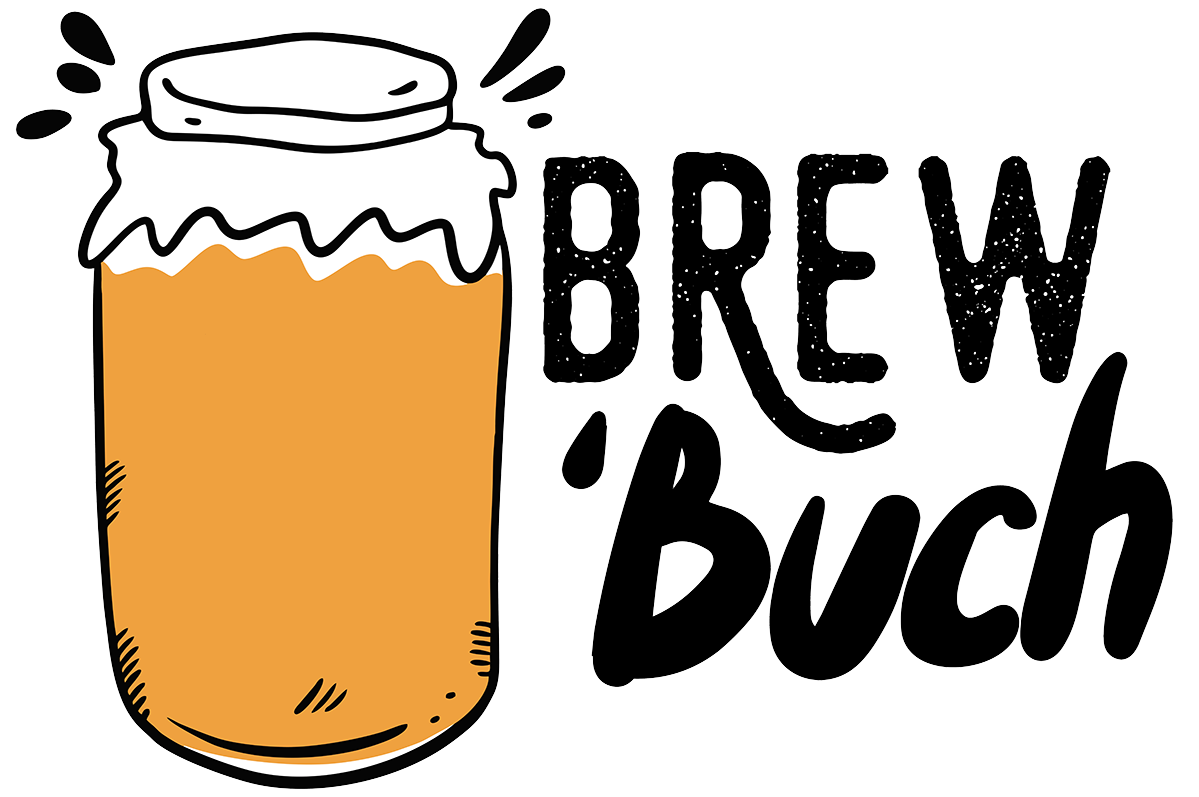Enjoy fizzy kombucha without an explosive disaster. Here’s how to prevent kombucha explosions in home brewing!

Ah, the satisfying pop of opening a bottle of homemade kombucha, eagerly anticipating that effervescent fizz and refreshing taste. But wait! What’s that? Oh no, an exploding bottle!
Don’t let your kombucha become a fizzy catastrophe. In this guide, we’ll uncover the secrets to preventing those explosive mishaps and ensure your kombucha adventures stay safe and delicious. Get ready to unleash the fizz without the fright!
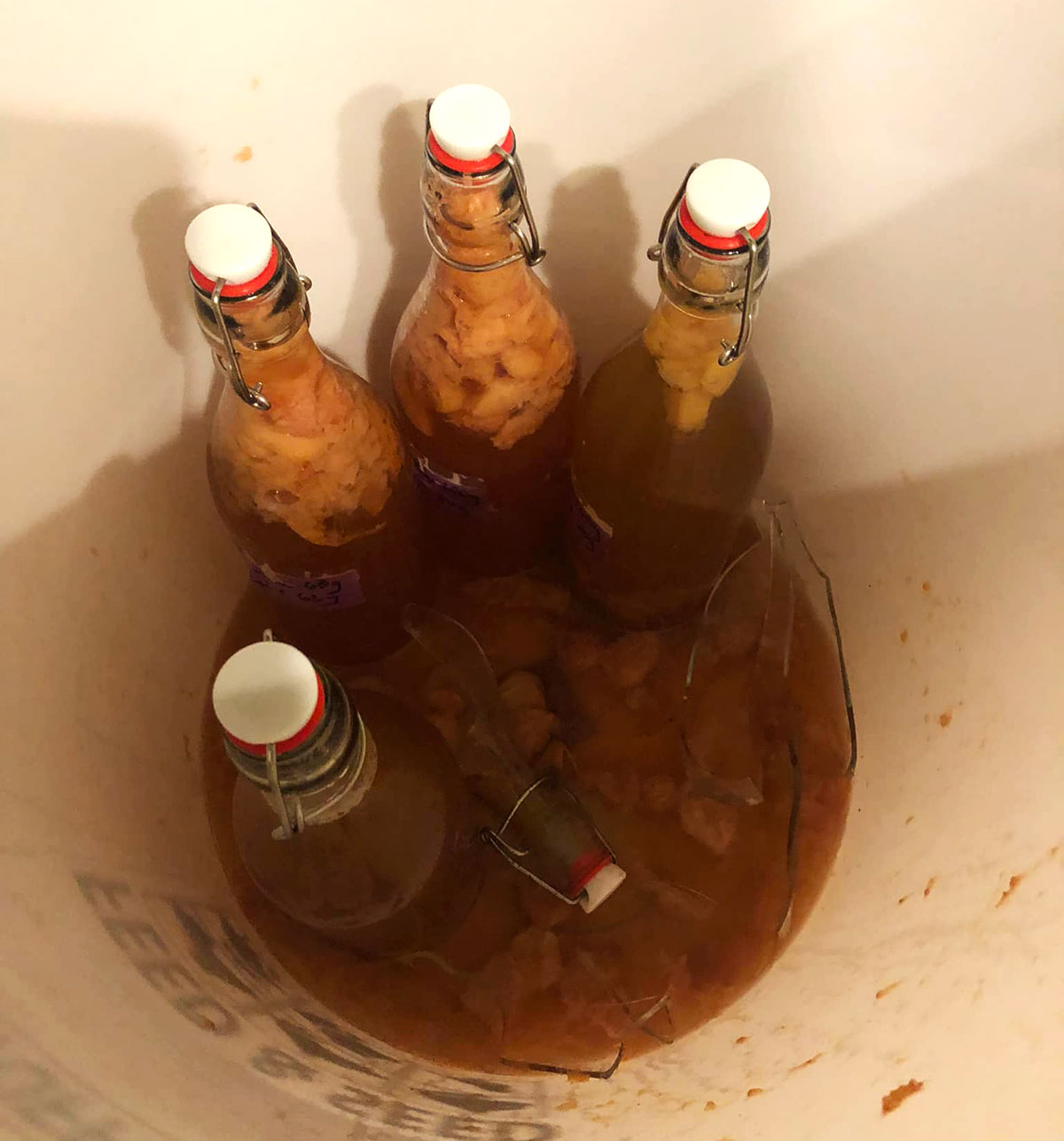
Why Do Kombucha Bottles Explode?
Before we dive into prevention, let’s understand why kombucha bottles can turn into explosive projectiles. It’s natural for kombucha to build up carbonation during fermentation. But as responsible brewers, we want to contain that pressure, not have it blow up in our faces.
During second fermentation of kombucha, yeast converts sugar into alcohol and carbon dioxide through anaerobic respiration. The carbon dioxide gets trapped in the bottle, creating pressure and dissolving into the liquid, resulting in carbonation. But too much of this can lead to over pressurized bottles and potential kombucha explosions!
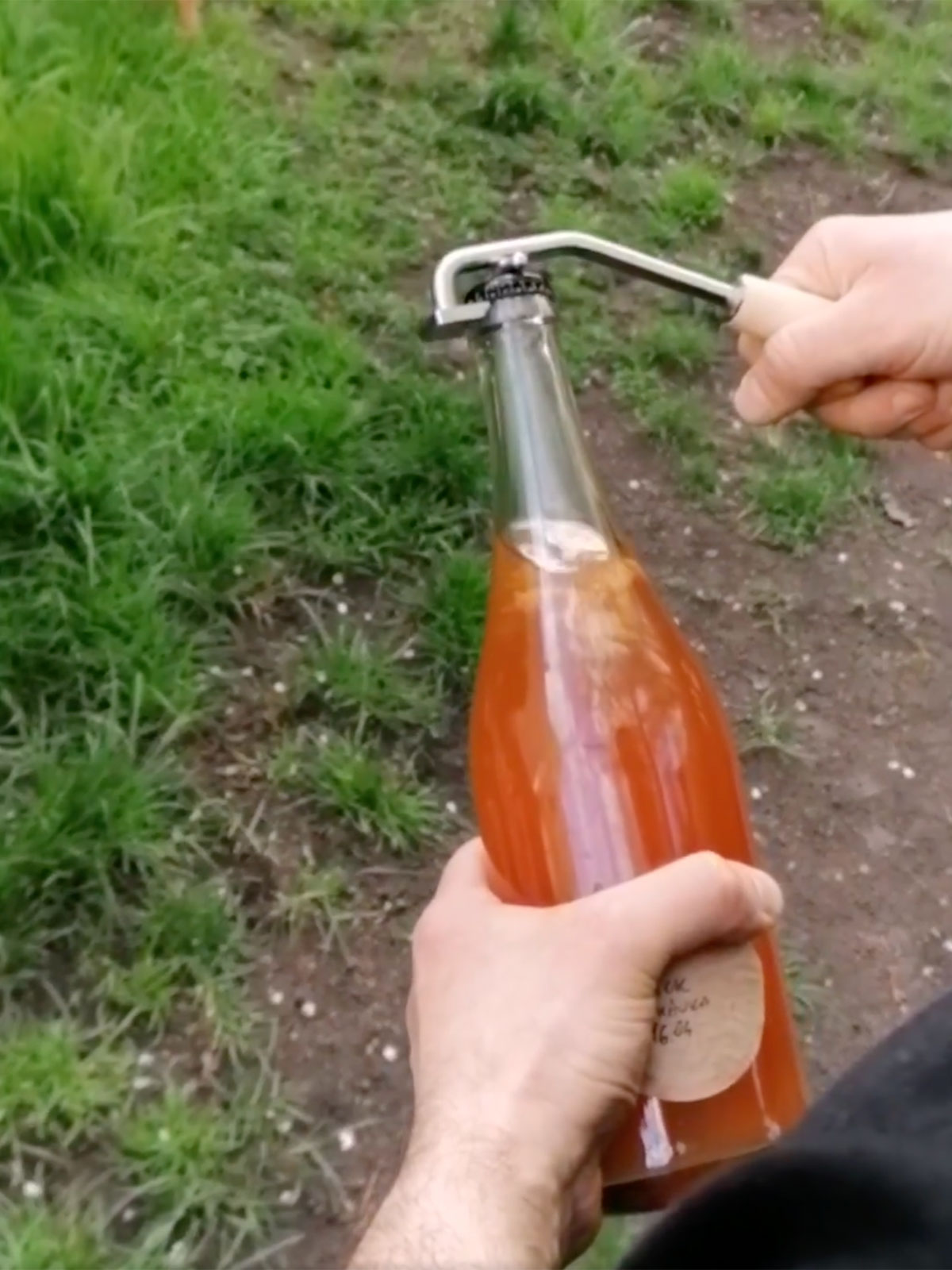
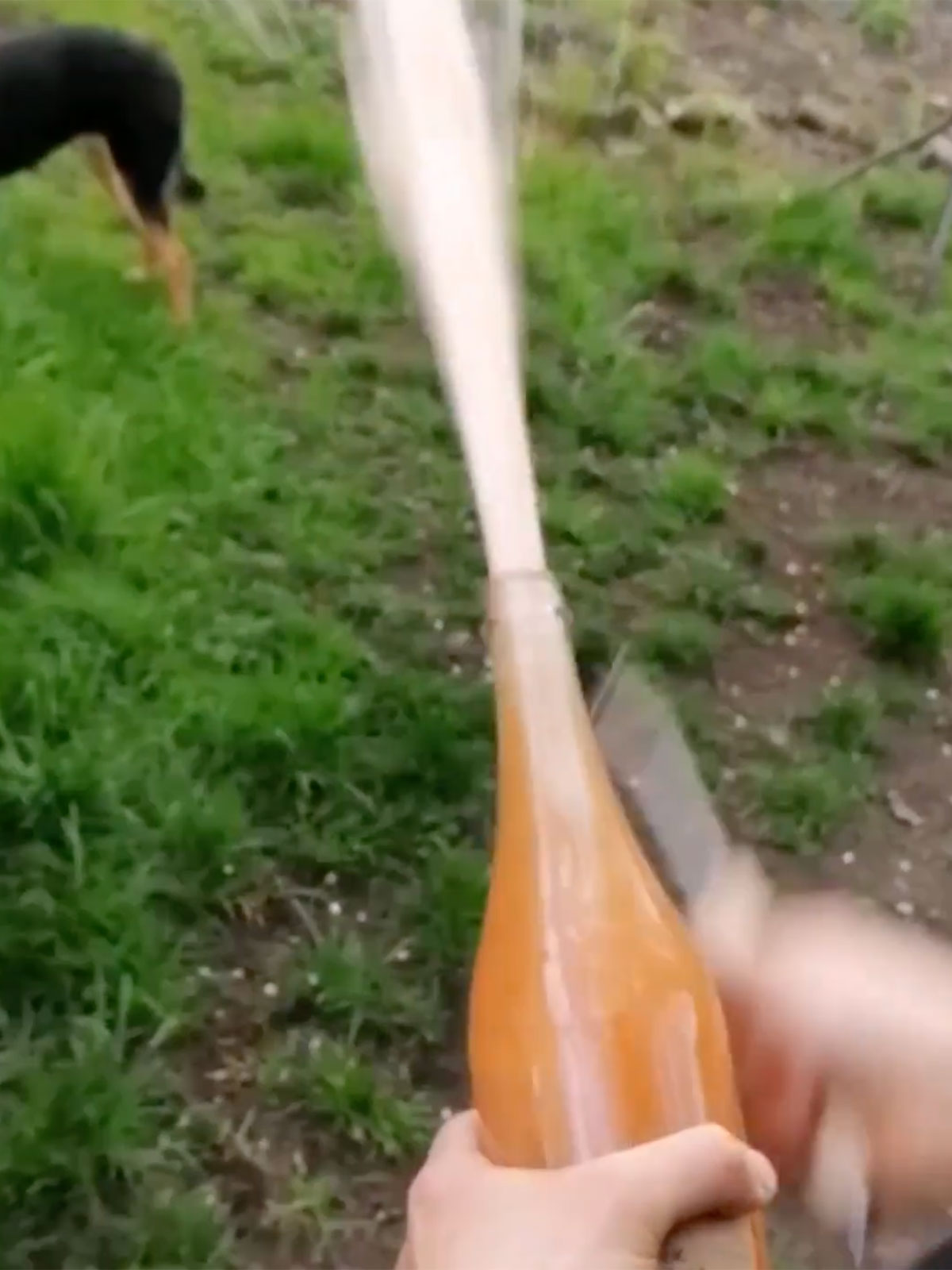
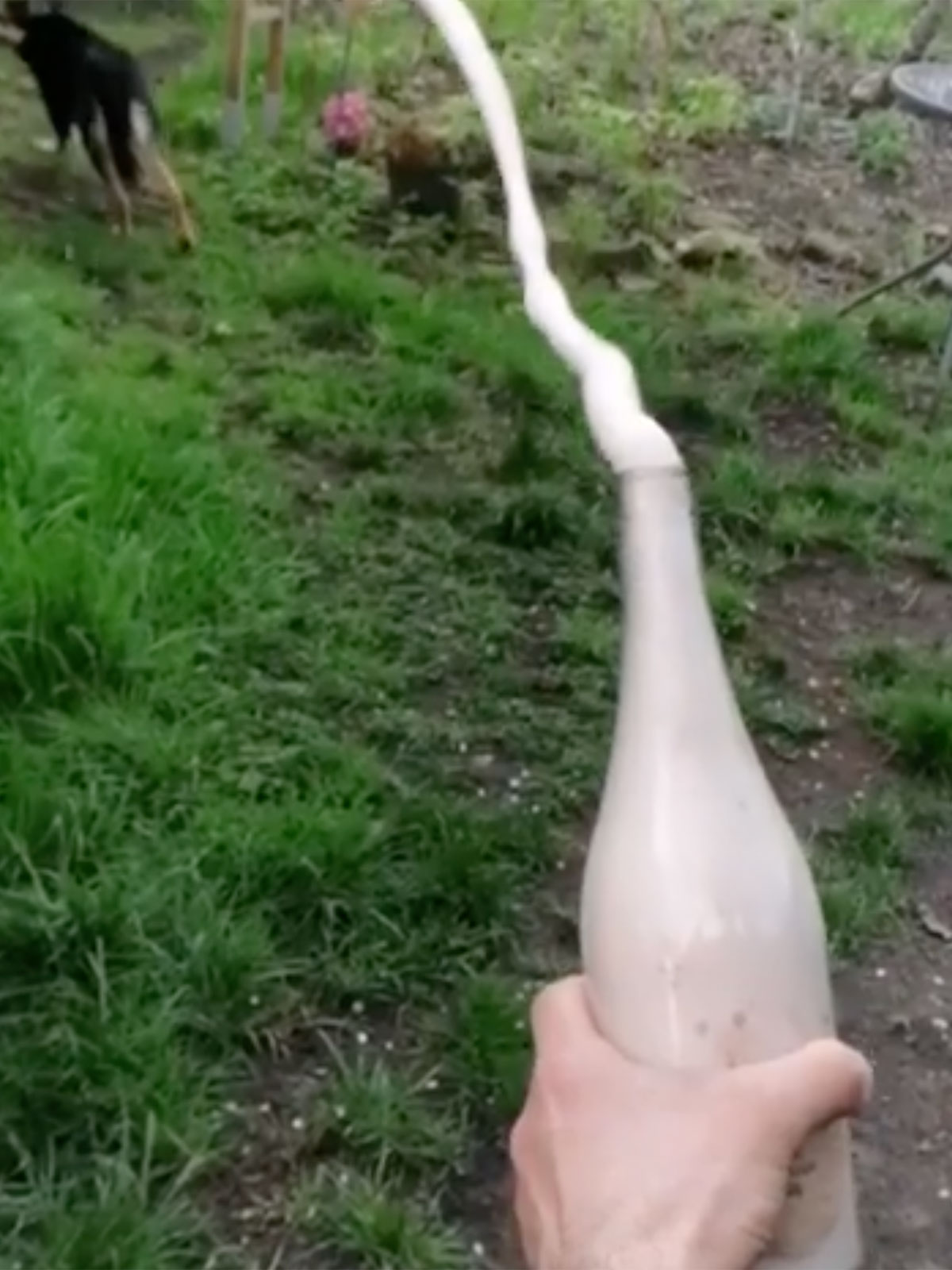
Preventing Kombucha Bottles From Exploding
Burping
Burping your kombucha bottles relieves excess pressure and can prevent explosions. How often should you burp? It depends on the stage of fermentation and your personal taste preferences. Start with a daily burp and adjust from there, listening for that delightful hiss.
Good Quality Bottles
Don’t underestimate the power of sturdy bottles in keeping your kombucha contained. Invest in high-quality, durable bottles designed for carbonated beverages and fermentations. Look for those with strong seals, like swing-top (grab our guide to best bottles for kombucha here).

Don’t Over Ferment
Over-fermentation can lead to excessive carbonation and dangerously high pressure. Keep an eye on the brewing time and taste test along the way to ensure your brew doesn’t turn into a fizzy explosion.
Don’t Over sweeten
Sugar is the fuel for fermentation, but too much of a good thing can lead to trouble. Use the right amount of sugar or juice during the brewing process, following your trusted kombucha flavor recipe. Too much sugar means excessive carbonation and potentially explosive situations. Find that sweet spot, literally.

Fill Bottles To The Right Level
The golden rule here is to leave some headspace for the magic to happen. As your kombucha ferments, it releases carbon dioxide, creating those delightful bubbles. Leave about an inch or so of headspace when filling your bottles to give the carbonation room to develop without building up excessive pressure.
Not Too Warm A Spot
Let’s keep it cool, folks. Kombucha prefers a moderate temperature range for fermentation, usually around 70-80°F (21-27°C). Avoid placing your bottles in overly warm spots, as heat can accelerate fermentation and result in over-carbonation.

How To Open Bottles
Now that you’ve mastered the art of prevention, let’s conquer the technique of opening those bottles safely. Picture this: towel or bag in hand, cover the top of the bottle, and carefully pop open the cap while keeping it shielded. If a little surprise escape occurs, the towel or bag will catch the overflow and save you from a sticky mess.
Pro tip: Perform this exciting task over a bowl for maximum spillage containment.
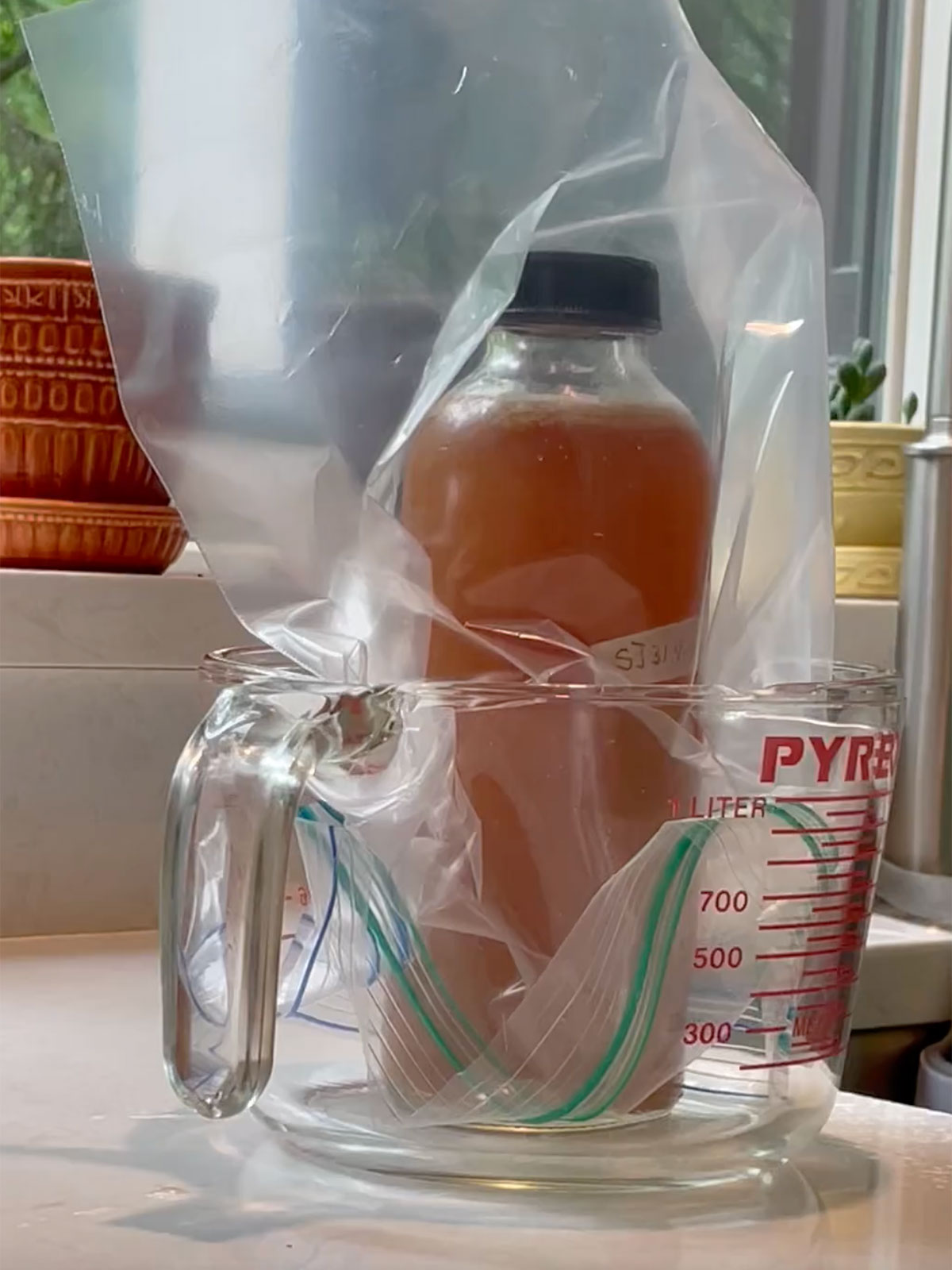
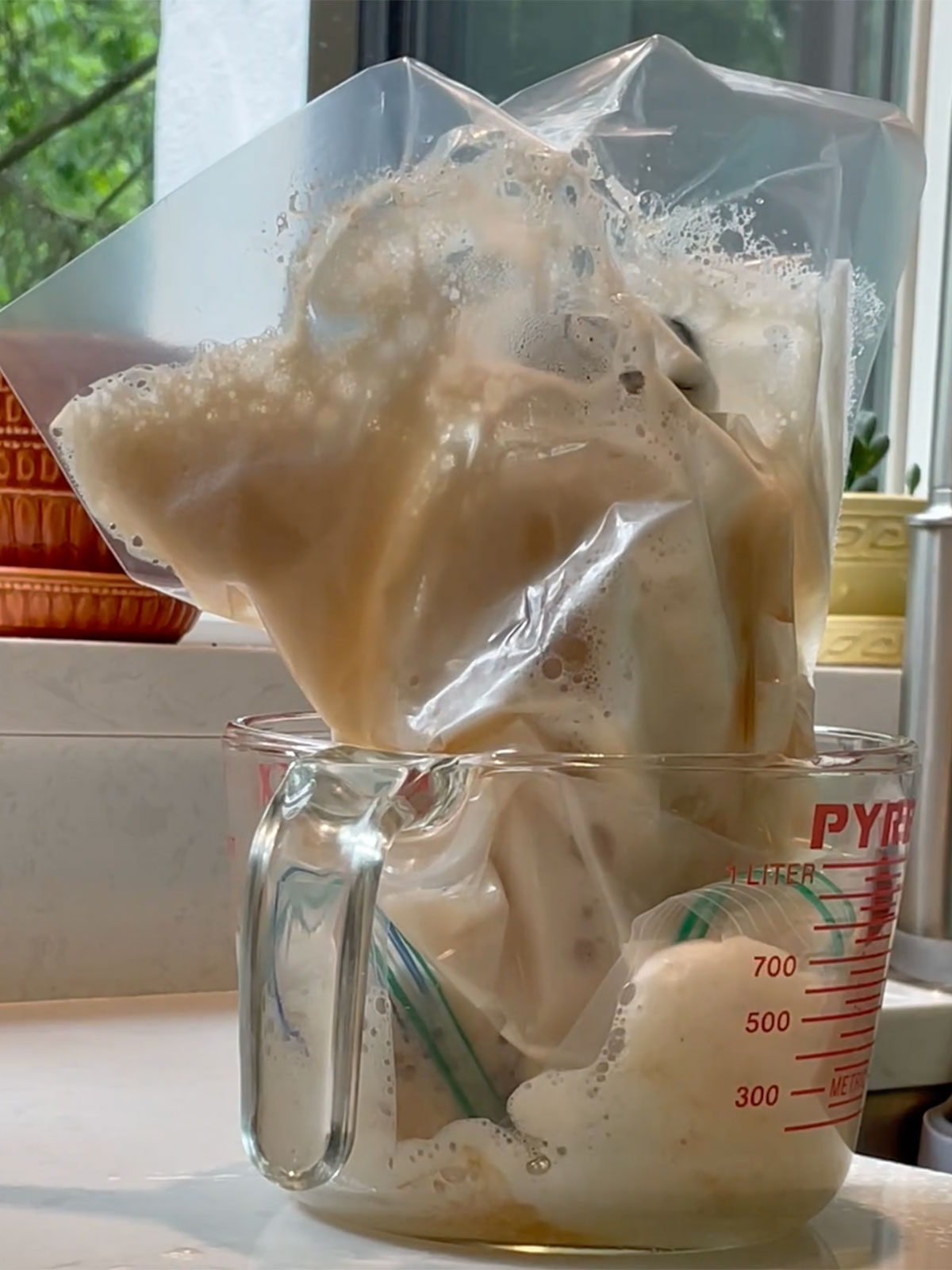
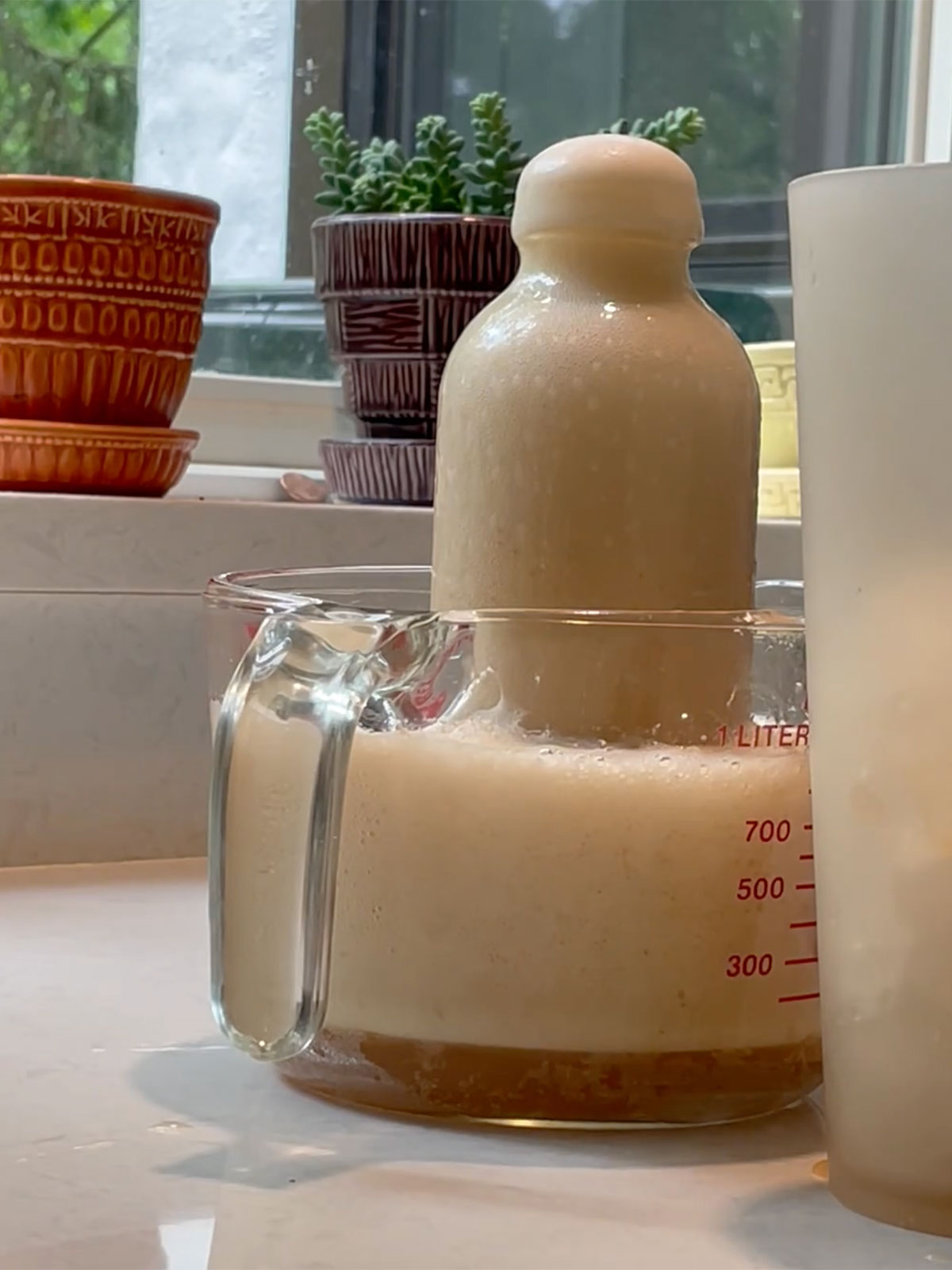
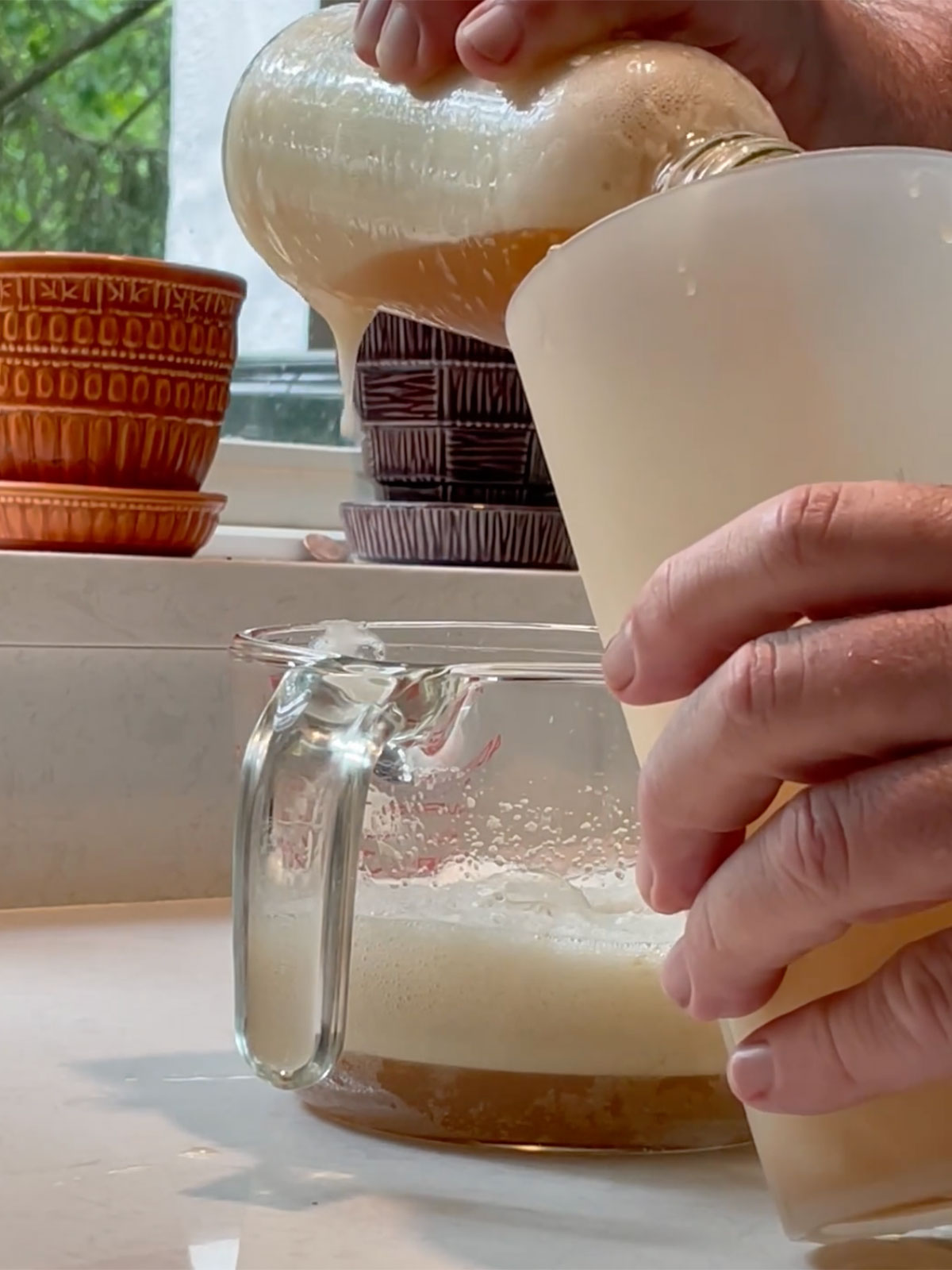
Why don’t commercial kombucha’s explode?
Ah, the commercial wonders of kombucha! Ever wondered why those bottles on the shelves don’t go boom? Well, they’ve got a few tricks up their carbonated sleeves:
- High pressure bottles: Commercial kombuchas are often bottled in containers designed to withstand higher pressures, minimizing the risk of explosions.
- Stopped fermentation by refrigeration: Refrigeration slows down fermentation, reducing the production of carbon dioxide. This keeps the pressure under control until you’re ready to enjoy that store-bought fizz.
- Forced carbonation: Some commercial brands use controlled methods to add carbonation to their kombucha, ensuring consistent levels of fizz without the unpredictability of natural fermentation.
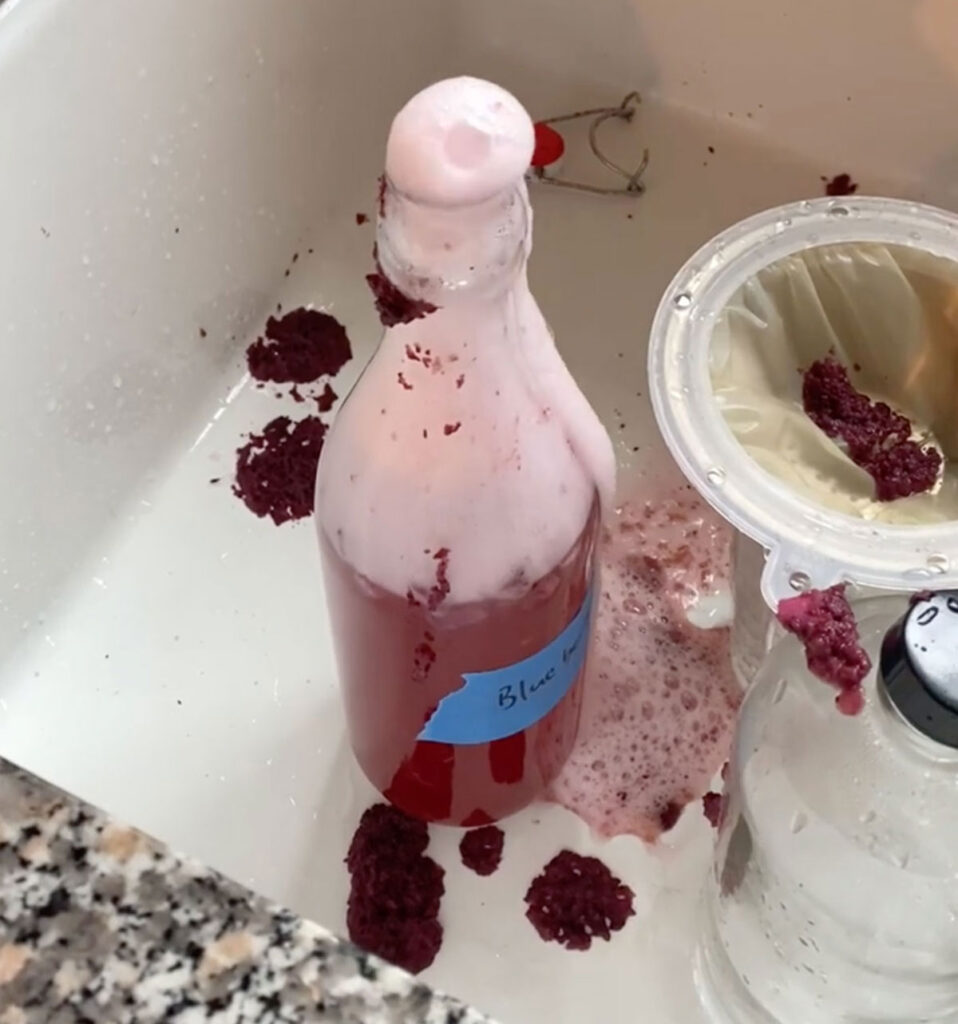
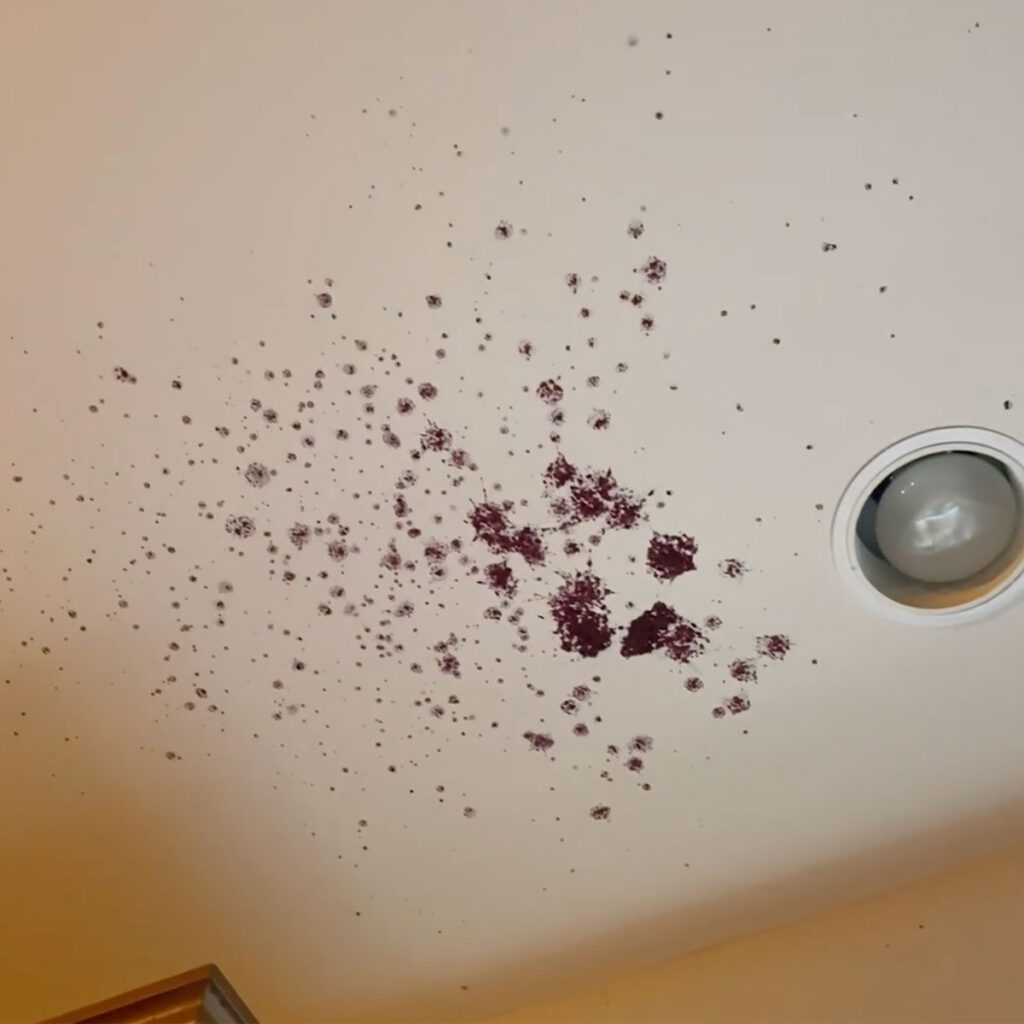
In conclusion
Now that you’re armed with the knowledge to prevent kombucha bottle explosions, it’s time to become the master of your fizzy domain.
Remember, burp with confidence, choose bottles that won’t let you down, monitor fermentation like a kombucha detective, and keep those sugar levels in check.
With a towel or bag as your trusty sidekick, you’re ready to pop those caps and savor the delightful effervescence of homemade kombucha.
So, go forth, fellow brewer, and enjoy the sparkling rewards of your fermentation adventures. Cheers to safe and explosively delicious kombucha!
Huge thanks to members of our Facebook Group who contributed there photos for this article! David Brannan, Jim Siesfeld, Mary Sachek, Przemek Labuz, and Yannick Boibessot.
